22 Lesson 7B
1. Escuchar. Listen to the story about Pedro and his family’s beach vacation.

Paso 1. Listen to the story about las vacaciones de Pedro and answer the following Cierto (C) or Falso (F) questions.
- Durante las noches, Pedro y sus hermanos veían la luna mientras su padre les contaba historias acerca del mar. C / F
- Antes de ir a la cama, Pedro leía libros pero prefería escuchar las conversaciones de su familia. C / F
- La familia de Pedro nunca hacía planes para preparar las comidas. C / F
- La madre de Pedro siempre pedía mariscos cuando iban al restaurante. C / F
Paso 2. Here is some more information about Pedro’s vacation. Read the script categorize the imperfect verbs in bold in the table based on if they are -AR verbs, -ER/-IR verbs, or irregulars..
Unas vacaciones memorables
Cuando era niño, Pedro tuvo una infancia llena de aventuras. Todos los años, Pedro y su familia tomaban unas vacaciones muy especiales a la playa de San Juan. Era una tradición especial.
Generalmente, se quedaban (they stayed) en una cabaña cerca del mar. Todos los días, Pedro y su familia hacían surf y nadaban en el mar. También a Pedro le gustaba tomar el sol y construir castillos de arena con sus hermanos. Con frecuencia, Pedro y su padre iban a cazar cangrejos (crabs) por la noche con linternas.
De vez en cuando, Pedro y su familia hacían picnics en la playa. Preparaban sándwiches y observaban la puesta de sol. Muchas veces, jugaban a las cartas antes de acostarse.
Pedro y su familia también dedicaban tiempo a explorar la naturaleza. A menudo, caminaban por los senderos cercanos y descubrían lugares nuevos. De vez en cuando, la familia alquilaba bicicletas y montaba por los senderos. Cada año, la rutina era similar, pero cada viaje traía nuevas aventuras y recuerdos.
Por las noches, Pedro y sus hermanos veían las estrellas en el cielo mientras su padre les contaba historias sobre el mar. La brisa era fresca. A veces, Pedro leía un libro antes de dormir, pero muchas veces prefería escuchar a su familia hablar.
Algunos días conducían a un pueblo cercano y comían en un restaurante cerca de la playa. Su madre siempre pedía mariscos, mientras Pedro comía su postre favorito. Siempre hacían algo nuevo y emocionante.
| -AR | -ER/-IR | Irregular (Ser, Ir, Ver) |
|
|
|
2. Describir. After reading about Pedro’s vacaciones memorables, let’s imagine more details about his trip. Take turns asking your partner about the various aspects of Pedro’s vacation. Use the adjectives from the word bank to describe each detail, and follow the model.
Modelo:
| Estudiante A | Estudiante B |
| ¿Cómo eran los cangrejos (crabs)? | Eran rojos y redondos. |
Banco de adjetivos:
| Cómoda | Limpia | Rápida | Increíble | Peligrosa |
| Grande | Ordenada | Desordenada | Agradable | Larga |
| Ruidosa | Pequeña | Cara | Blanca | Roja |
- ¿Cómo era la playa de San Juan?
- ¿Cómo era la cabaña?
- ¿Cómo eran los castillos de arena?
- ¿Cómo eran los picnics?
- ¿Cómo eran los senderos?
- ¿Cómo eran las bicicletas?
3. Completar. Complete the following chart with the correct imperfect conjugation of the verb SER.
| SER | |
| Yo era | Nosotros éramos |
| Tú … | Vosotros erais |
| Ella … | Ellos … |
4. Escuchar. Listen to María remembering vacation times with her young children and her husband Pedro.
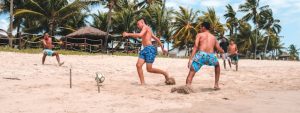
Paso 1. Answer the questions according to the listening.
- ¿Cuándo iba la familia a la playa?
- ¿Qué les gustaba hacer en la playa a los chicos?
- ¿Qué comía Pedro con frecuencia?
- ¿Qué hacía la familia en el hotel?
- ¿Qué hacía María todos los días?
Paso 2. Make a list of all the verbs in the past tense that you hear in the listening activity..
5. Completar. Complete the following chart with the correct imperfect conjugation of the verb IR.
| IR | |
| Yo … | Nosotros… |
| Tú ibas | Vosotros ibais |
| Ella iba | Ellos … |
6. Jugar. ¿A dónde ibas? Using the chart below, walk around the classroom and ask your classmates questions about their childhood routines and activities. Be sure to conjugate the verb IR in the imperfect form when you ask and answer the questions. If your classmate replies with a Sí, then write their name in the box. See how many names you can collect!
| ¿IR a Walmart todas las semanas? |
¿IR de vacaciones a Minnesota regularmente? |
¿IR a la piscina cada día del verano? |
¿IR a la playa regularmente? |
| ¿IR a McDonald’s para un Happy Meal de vez en cuando? |
¿IR al cine con amigos normalmente? |
¿IR a unos conciertos frecuentemente? |
¿IR a la escuela por autobús normalmente? |
| ¿IR a Disney World regularmente?
|
¿IR a los museos de arte de vez en cuando? |
¿IR a la casa de tus abuelos todas las semanas? |
¿IR a las montañas para esquiar frecuentemente? |
|
¿IR a un lago cada verano?
|
¿IR a un parque acuático regularmente? |
¿IR a la casa de tu amigo para jugar videojuegos por las tardes? |
¿IR a un parque con tus amigos todos los veranos? |
7. Adivinar. Take turns asking each other questions based on the following pictures of places and pieces of information. You can ask any of the three possible questions, and you do not need to go in order. Be sure to conjugate the verb IR in the imperfect tense and formulate your questions according to the subjects.
Modelo:
A: ¿Quiénes iban al concierto?
B: Ricardo y Sonia iban al concierto.
A: ¿A dónde iban Ricardo y Sonia?
B: Iban al concierto.
A: ¿Con qué frecuencia iban Ricardo y Sonia al concierto?
B: Iban los fines de semana.
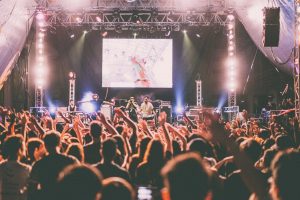 |
Modelo:
Ricardo y Sonia Los fines de semana |
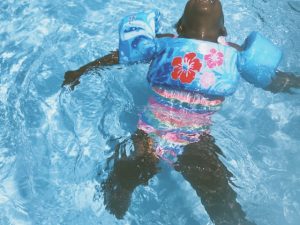 |
Kiana
Todos los veranos |
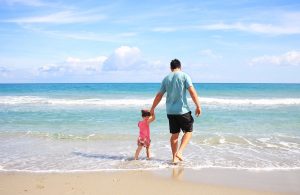 |
Miguel y Evita
Cada año |
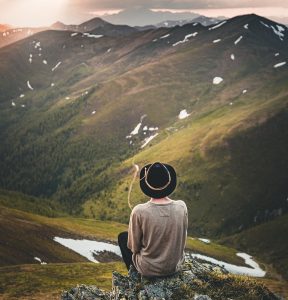 |
Adolfo
Frecuentemente |
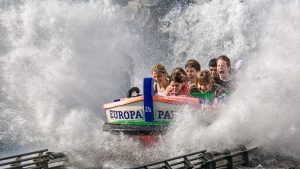 |
Estela y sus amigos
Los fines de semana |
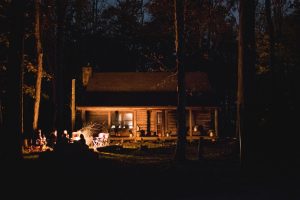 |
Raquel
A veces |
8. Completar. Fill in the blanks with the correct form of ser, ir and/or ver.
- Cuando yo _____________ niño, me gustaba jugar con mis amigos en el parque.
- Todos los veranos, mi familia y yo _____________ a la playa para las vacaciones.
- De pequeña, siempre _____________ caricaturas por la mañana antes de ir a la escuela.
- Mi mejor amigo y yo _____________ inseparables y hacíamos todo juntos.
- Los fines de semana, mis padres y yo _____________ al cine a ver películas.
- Antes, no había tanta tecnología y mi familia _____________ más la televisión.
- Mis abuelos _____________ muy cariñosos y siempre me contaban historias interesantes.
9. Escribir. Write a short paragraph (4-5 sentences) about your life when you were younger, using the imperfect tense of ser and ir. Include:
- Describe what you were like as a child (ser).
- Talk about where you used to go and what you used to do (ir).
- Use at least two sentences with ser and two with ir in the imperfect tense.
…
10. Mirar. Watch the video about Natalia, Daniel and Camila.
Paso 1. Decide if the following statements are Ciertos (C) or Falsos (F).
¿Qué hacías con tus amigos?
-
Natalia jugaba al fútbol con sus amigos.
-
Daniel y Camila jugaban Pokémon en el Game Boy.
¿Qué programa veías en la tele?
-
Camila veía dibujos animados en la televisión.
-
Natalia veía películas de Disney.
¿Qué música escuchabas?
-
Daniel escuchaba flamenco y salsa.
-
Camila escuchaba Blink 182.
¿Qué actividades hacías con tu familia?
-
Natalia y su familia iban a la iglesia los domingos.
-
Después de ir a la iglesia, Natalia y su familia iban al cine.
Paso 2. Fill in the blank based on the video using the verbs from the banco de verbos, they are already conjugated.
| Banco de verbos: | escuchaba | iba |
| comían | veíamos | comía |
- Natalia __________________ bocadillos (sandwiches) de chorizo, jamón, queso y Nutella para su cumpleaños.
- Daniel __________________ rock y hip hop en español.
- Camila __________________ a la playa en Cartagena durante las vacaciones.
- Mi familia y yo__________________ películas en el cine.
- Camila y sus amigos __________________ hamburguesas, papas fritas y una malteada para su cumpleaños.
11. Inventar. Let’s play Dos verdades y una mentira (Two truths and a lie)!
Paso 1. Write down three sentences about your childhood routines, rituals, or repeated activities. Make sure one of your sentences is a lie! You can use the suggestions in the bank or invent your own. Be sure to conjugate the verbs in the imperfecto!
Banco de verbos:
| Mirar | Ser | Trabajar | Estudiar | Ver | Ir | Correr | Practicar |
| Hacer | Tener | Vivir | Comer | Jugar | Viajar | Bailar | Leer |
Algunas ideas posibles:
- Mi familia y yo viajábamos a Australia.
- Tenía un lagarto (lizard).
- Mi padre era un autor famoso.
- Yo bailaba ballet.
- Mi hermana y yo comíamos helado todos los días.
Paso 2. Read your three sentences to your partner. Your partner will try to guess which two sentences are true (la verdad) and which one is a lie (la mentira).
Modelo:
| Estudiante A: | Estudiante B: |
| 1. Yo siempre miraba Spongebob Squarepants en la tele.
2. Mi mejor amiga era de España. 3. Mi familia iba a Canadá todos los veranos. |
¿Número dos es la mentira? |
| Sí. ¡Correcto! Muy bien. |
12. Interactuar. For this activity we will compare what we used to do to what we do now.
Paso 1 . On your own, fill in the table below with the things you used to like or do when you were younger and the ones you like or do now.
| Your name: … | De niño/a/e | Ahora |
| Con mis amigos | ||
| Programas de televisión | ||
| Música | ||
| Con tu familia | ||
| Comida para el cumpleaños | ||
| Vacaciones |
Paso 2. Find out about your classmate. First ask each other questions about the activities they used to do, and then about the ones they do now. When talking about the past you will use the imperfect tense, while when talking about “ahora” you will use the present tense.
- ¿Qué hacías con tus amigos? / ¿Qué haces con tus amigos?
- ¿Qué programa mirabas en la tele? / ¿Qué programa miras en la tele?
- ¿Qué música escuchabas? / ¿Qué música escuchas?
- ¿Qué actividades hacías con tu familia? / ¿Qué actividades haces con tu familia?
- ¿Qué comías para tu cumpleaños? / ¿Qué comes para tu cumpleaños?
- ¿Adónde ibas de vacaciones? / ¿Adónde vas de vacaciones?
Paso 3. Fill out the table with the information you gather from your classmate.
| Your classmate’s name: … | De niño/a/e | Ahora |
| Con mis amigos | ||
| Programas de televisión | ||
| Música | ||
| Con tu familia | ||
| Comida para el cumpleaños | ||
| Vacaciones |
https://pressbooks.uiowa.edu/app/uploads/sites/370/2025/02/Module-7B-interactuar-chart.pdf

